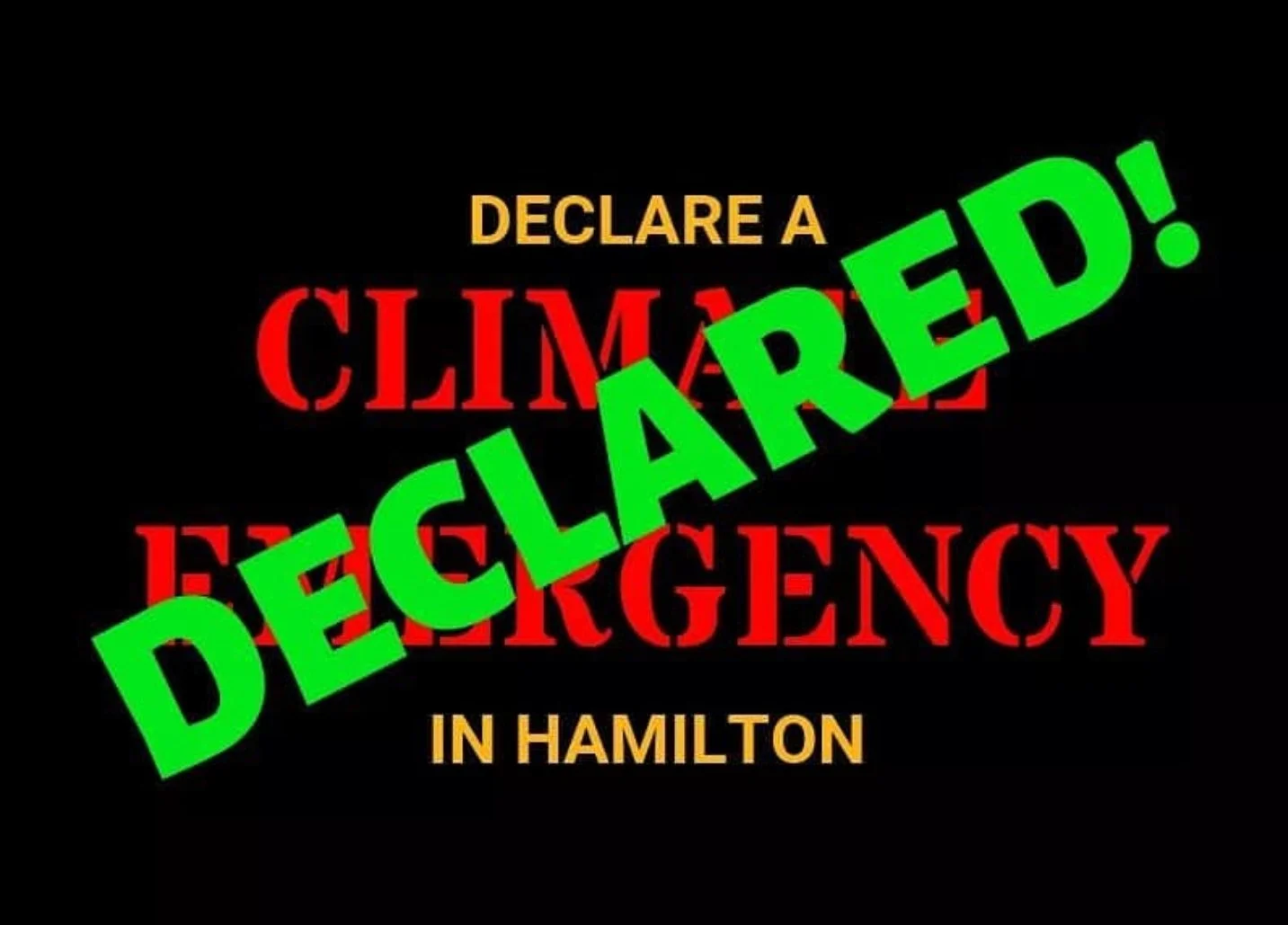Implementing the climate emergency declaration
How can Hamilton make good on its declaration of a climate emergency to drastically and quickly slash emissions of greenhouse gases in the city?
Image Source: Environment Hamilton, 2019.
How can Hamilton make good on its declaration of a climate emergency to drastically and quickly slash emissions of greenhouse gases in the city? Staff recommendations due this month will begin to describe the implementation plans and could draw on the work that others have already started to detail.
Vancouver’s climate emergency declaration was one of the first and came more than two months before Hamilton councillors unanimously took a similar position in late March. Last week Vancouver approved its implementation plan.
Sudbury, St Catharines and Halton Hills have recently adopted climate emergency resolutions and there are now more than a dozen in place in British Columbia, including Victoria, Richmond and Nanaimo. And this week the House of Commons will debate motions from both the Liberals and the NDP calling for a national declaration.
The plan endorsed by Vancouver focuses on six “big moves” to cut emissions in half by 2030, but also includes over fifty additional specific steps. The “big move” targets set out in the plan are intended to meet Vancouver’s responsibilities in meeting the global goal to keep average temperature increases to no more than 1.5 Celsius degrees.
By 2030, Vancouver believes it can ensure that two thirds of resident trips in the city “will be by active transportation and transit” and that “50 percent of the kilometres driven on Vancouver roads will be by zero emission vehicles.” A separate but related goal is that 90 percent of its residents will “live within an easy walk/roll of their daily needs”.
Other “big moves” are to ensure that “all new and replacement heating and hot water systems will be zero emissions” by 2025 and that by 2030 “the embodied emissions in new buildings and construction projects will be reduced by 40 percent compared to a 2018 baseline”. The staff report explains that a quarter of the 2030 floor space isn’t built yet and constructing it “with zero emissions space and water heating starting as early as 2021 avoids the need to retrofit in the future.”
Long term carbon drawdown is also a key part of the Vancouver plan with the target over the next decade “restoration work will be completed on enough forest and coastal ecosystems … to remove one million tonnes of carbon pollution annually by 2060.” Staff explain that it will take time for this restoration work to achieve significant removal of carbon from the atmosphere so quick action is required.
“The threat of climate breakdown has been clearly documented by the world’s scientists,” they note. “Vancouver is already experiencing the impacts of 1°C of warming, including more severe storms, flooding, and forest fire smoke. Every degree of warming will increase those impacts and make it increasingly difficult, and eventually impossible, to adapt.”
Hamilton is also again facing big climate bills with Lake Ontario now at record levels, waterfront trails flooded and eroding away, and more escarpment crossings being blocked by mud slides. Updating the city’s urban forest rules is underway with public workshops on June 5, 19 and 24.
Public concern about climate also appears to be sharply increasing in Hamilton. About 175 youth and their supporters took part in the climate strike outside city hall on May 24. They joined hundreds of thousands in 110 countries across the planet in demanding immediate action from governments.
Additional local support for climate action was very evident in an overflow town hall meeting held that same Friday evening to generate input for a Green New Deal for Canada. It was one of over 150 across the country in response to a unified call by over 80 organizations.



